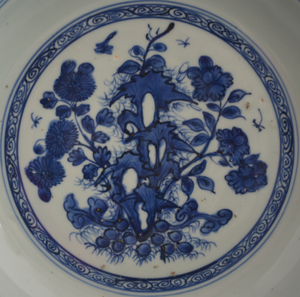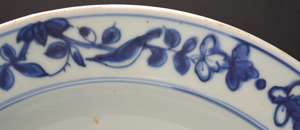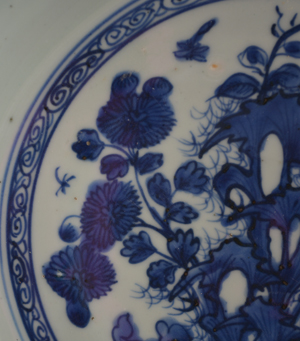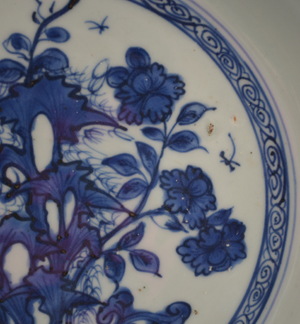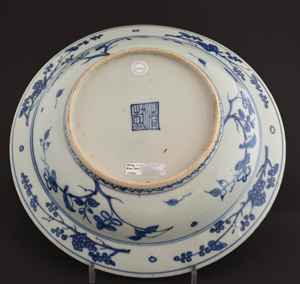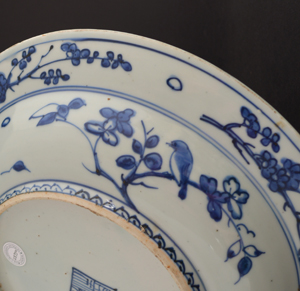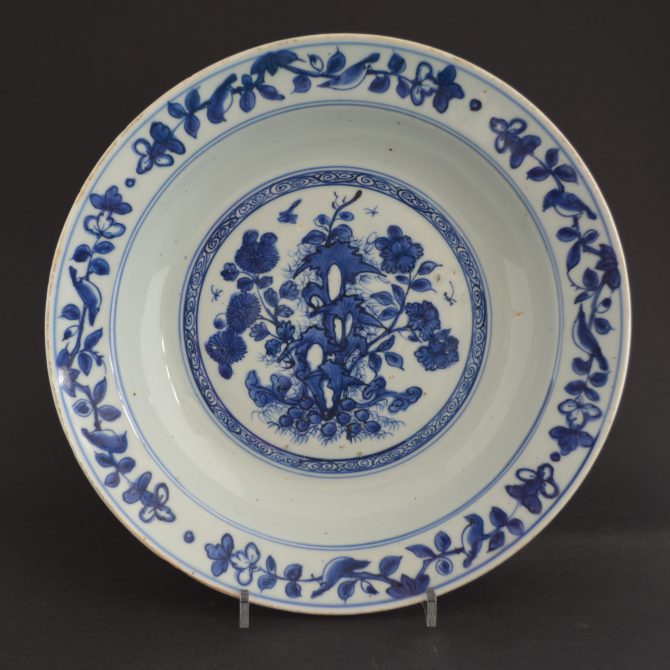
JIAJING to WANLI c.1560 – 1580 Ming Porcelain
A Large Ming Blue and White Porcelain Dish, Late Jiajing (1522-1566), Longqing (1567-1572) or Early Wanli (1573-1620) c.1560-1580. This Dish is Painted in Strong Rich Cobalt Blue, the Center is Decorated with a Scholar`s Rock, Chrysanthemum and Peony Beneath this is Lingzhi Fungus. The Outer Border is of Four Double Branches Each with a Bird. The Bask with Similar Subjects and the base with a Seal-Mark.
SOLD
- Condition
- In excellent condition, the rim with light fritting. The dish has wrapped in the kiln.
- Size
- Diameter : 30.5 cm (12 inches)
- Provenance
- N/A
- Stock number
- 23730
Information
Jiajing 1522 - 1566 :
From the beginning of Jiajing`s reign, he was infatuated with young women and Taoist pursuits. He was known to be a cruel and self-aggrandizing emperor and he also chose to reside outside of the Forbidden city in Beijing so he could live in isolation while ignoring state affairs. Jiajing employed incapable individuals such as Zhang Cong and Yan Gao, on whom he thoroughly relied to handle affairs of state. He abandoned the practice of seeing his ministers altogether from 1539 onwards and for a period of almost 25 years refused to give official audiences, choosing instead to relay his wishes through eunuchs and officials. This eventually led to corruption at all levels of the Ming government. Jiajing`s ruthlessness also led to an internal plot by his concubines to assassinate him in 1542 by strangling him while he slept. The plot was ultimately foiled and all of the concubines involved were summarily executed.
Scholar`s Rocks :
Chinese scholars` rocks, also known as scholar stones or viewing stones, are small shaped or naturally-occurring rocks appreciated by Chinese scholars from the Song dynasty onwards, and quite frequently found in traditional Chinese gardens. The most highly regarded stones are lingbi rocks, from Lingbi County of Anhui Province, with the finest examples dating from the Ming dynasty and Song dynasty. Taihu rocks are also prized, and are commonly used as garden stones. They influenced the development of Korean stone art and Japanese suiseki aesthetics and styles and were an important part of Confucian art. Natural stone and rock formations, with no artificial carvings, are preferred. Rocks would sometimes be carved and then thrown back into a lake so that any markings could be washed away. Scholars rocks can be any colour, and contrasting colours are not uncommon. Sometimes they feature painted patterns, which can be of any subject, either natural or abstract. The size of the stone can also be quite varied: scholars rocks can weigh either hundreds of pounds or less that one pound. Subtlety of colour, shape, and markings is also desired, as is beauty of texture and shape. Scholars stones are usually reminiscent of someone or something, or it may convey a spiritual nature that moves viewers in some way. They are usually set upon a stable surface, such as a rosewood pedestal that has been carved specifically for the stone.
Ruyi-Head and Lingzhi Fungus Designs:
The Ruyi scepter has been an important symbol in China since at least Western Han times, its origins are still unclear, it might be Chinese but it could equally well be a Buddhist import. The Taoists believe the Ruyi evolved from the Lingzhi fungus, their symbol of immortality. Indeed the Ruyi-Head, that is the top of the scepter which curves back over the main body is often modelled as a Lingzhi fungus cloud form. Lingzhi is the immorality fungus and Ruyi means "may you have".
Peony :
Peonies are the most commonly encountered flower on Chinese porcelain, indeed in Chinese art in general. There are two cultivated types of peony commonly depicted, the tree peony Paeonia Suffruicosa (Mudan) and the herbaceous peony P.Lactiflora (Shaoyao). Both have rich exuberant flowers with thin silk like petals but the plants are rather different to each other. The tree peony is not in fact a tree but a deciduous shrub, sometimes rather large and sprawling, it has irregular woody stems. It shares a similar leaf and flower form to the herbaceous peony but they are not close in other ways. The Chinese refer to the peony as the `King of flowers` and are seen as equivalent to the first rank among officials. The flowers are closely associated with royalty because they have been grown in imperial gardens since the Sui dynasty (581-618). The peony is one of the flowers of the four seasons and represents the Spring. It symbolizes wealth and honour, honour in the sense of high rank, having an official position, or high social status.
